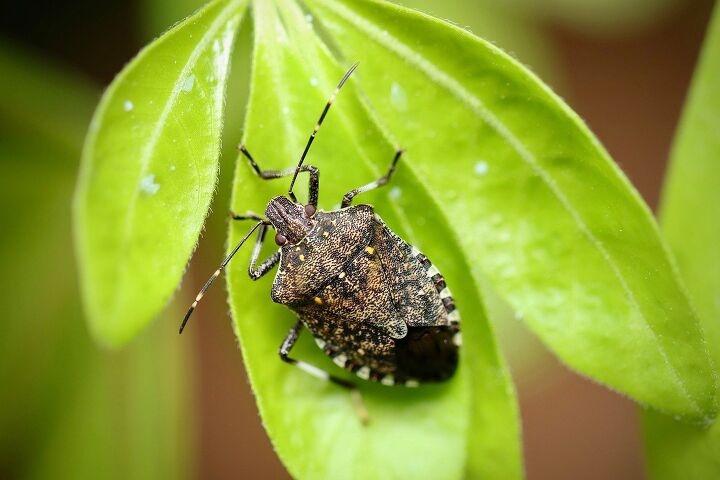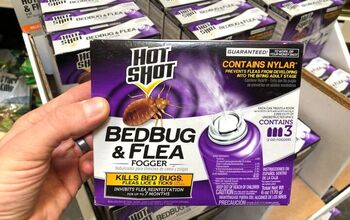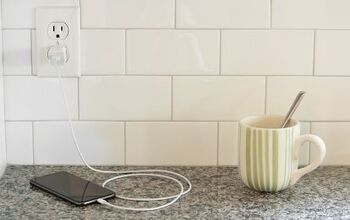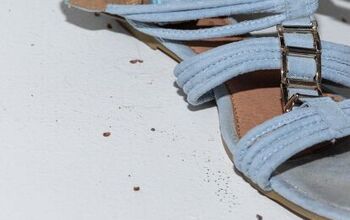What To Cover When Bug Bombing (Find Out Now!)

Like it or not, there are tons of different critters out there that can get into our home and cause real issues. Whether it is something that our pets bring in or something that makes its way indoors from the outside, it poses a serious problem. Bug bombing is the quickest way to get rid of a serious bug problem, but you need to prepare and know what to cover when bug bombing.
When bug bombing, cover all utensils, food items, toys, toiletries, plants, and other belongings to protect them from contamination. You can use tarps, plastic sheeting, newspapers, or other disposable covers to protect your items. You should also unplug all appliances, remove any items you are extra concerned about, and hang door signs to warn people to not enter.
In this article, we’ll look at how to prepare for bug bombing and what to expect from the bombing process. We’ll also look at what you should cover up and the best way to do so to protect your belongings.
Do You Need Pest Control Services?
Get free, zero-commitment quotes from pro contractors near you.

What to Do Before Starting the Bug Bombing Process
Before you start the process of fogging or bug bombing, there are some things to take into consideration. You can’t just release them and expect to come back to everything as if it were back to normal again.
The vapors from the bug bombs are quite toxic and there are preparations that need to be made other than simply removing yourself and your pets from the home. In addition to covering certain items and surfaces, you should vacuum your carpeting and wash any pet bedding as well. When that has been taken care of, you can move on to covering the important surfaces and items before moving on with the bug bombing process.
How do I Prepare My House for Bug Fogging?
Gas and Electric Appliances
If you have heating or air conditioner vents, it is imperative that you cover them, preferably with a plastic sheet. Make sure that you shut off the air conditioner as well as any fans or heaters that may be in the home.
Any of your electrical appliances that are actively running, like the refrigerator, should be covered as well. Remove the batteries from the smoke detectors and then turn off any sources of ignition in your house. This will generally entail pilot lights in water heaters as well as any gas fireplace flames. These fumes can be quite flammable and the last thing that you want is to send the house up in flames when trying to rid yourself of a bug problem.
Kitchen Area
In the kitchen, be certain to open any cupboards, cabinets, closets, drawers, and doors within the area during the treatment process. Cabinets that don’t require treatment should be taped shut to keep the fumes out if possible.
For any utensils, exposed food, food processing equipment, food preparation surfaces, or dishes, make sure to cover using either washable clothes, plastic sheets, or newspaper. That will ensure that they aren’t contaminated by the fumes of the bug bombs.
If at all possible, take those things out of the house entirely. The more you can remove from the home, the easier it will be to prepare the home for bug bombing.
Sleeping and Living Areas
For homes that have children, make sure to remove any toys or to keep them covered with a tarp or some throwaway sheets. Use wrapping sheets or polyethylene bags to wrap up your clothes as well as any toiletries.
The flooring will need to be covered as well, especially if they are waxed wood floors. You can use plastic sheeting, disposable tarps, or even old newspapers for just this purpose. Remove the furniture from carpeted areas if you can and cover the furniture using old sheets or plastic tarps.
Keep indoor plants and delicate furniture in particular away from fumes; move them to a garage space or store them under cover outdoors if you can. Fish tanks need to be covered tightly using newspaper, towels or a plastic sheet and the tank’s filter needs to be turned off. The fumes can and will kill the fish if they are not properly protected.
What to Expect During the Fogging/Bombing Process
With all of your belongings properly protected and the chance for fire drastically reduced, there are still a couple of things left to do before you start the bombing process. Obviously, make sure that you, your family, and your pets are all out of the home before the bombing process starts.
Select foggers that are the proper size for each of your rooms to ensure that the process is effective. Stand in the center of the room on a covered chair or table.
You can cover them with paper towels. Shake the bug bomb well before you use it, tilting the sprayer away from your face.
When activating the fogger, make sure that you press the valve away from your face before leaving it on the chair or table. Close any doors behind you and leave for at least two or three hours. If you have accommodations made, it couldn’t hurt to wait a day to ensure that the fog dissipates completely.
When You Come Back Home
When you return, particularly if you’re coming back that day, don’t bring your pets or kids with you. Return alone and open all of the windows in the home up. Turn on the ceiling and electric fans, plug in your running appliances, and turn the smoke alarms back on.
When airing out the house, give it at least three hours to push all of the fumes out through the windows. After the house has had a chance to air out, it should be safe for your family and pets to return back home.
It is a good idea to give your pets a tick control and pet flea treatment before returning home. Even if they weren’t at fault, you don’t want to bring something new into the home with you.
After Returning Home
Now that you are home and the fogging process has been completed, you’ll need to wash any of your curtains, linens, and other exposed items. This will remove any of the residue left over from the pesticide.
For the first couple of weeks, be sure to vacuum your carpets every couple of days. Should you smell the pesticide at all, even a little, open up any of the windows in that room and aim a couple of fans outward to push the toxic air completely out of the house.
When it comes to these pesticides, you can never be too safe when removing them from the home. You want them to do a thorough job and get rid of your infestation, not inflict damage to yourself, your family, or your pets.
When Should I Use a Bug Bomb?
It’s important to realize that bug bombs aren’t necessarily a cure-all for any type of insect infestation. Bombs are only effective when they come into direct contact with the insect in question, so it’s important to use them properly. The best way to use a bug bomb is when it’s integrated into a broader pesticide solution. If critters are hiding inside your walls and ceilings, there’s no guarantee that a bug bomb will be effective at killing them.
You would do well to seek the counsel of a professional exterminator. Even if you don’t hire them for the job, they can advise you about the right kind of bug bomb to get for your situation. They can also tell you where the best place is to set the bug bomb off to inflict maximum damage.
What Does a Bug Bomb Kill?
Generally speaking, “bug bombs” are just another name for total release foggers. These foggers contain pesticides that contain aerosol propellants. These release into the air in order to fumigate it and rid it of certain kinds of insects.
Generally speaking, bug bombs are meant to rid an area of fleas, cockroaches, bed bugs, termites, ticks, and a plethora of other insects. People typically only use them in extreme matters; you wouldn’t need to resort to bug bombing in the event of seeing a few of those things at one time.
Will a Bug Bomb Set Off a Smoke Detector?
The reason for removing the batteries is important for your smoke detectors actually has nothing to do with setting them off. While that would be an annoyance and could ultimately kill the batteries prematurely, it isn’t the point of taking out the batteries.
The reason you would want to take the batteries out of your detectors before setting off the bug bombs is to protect them. You want to prevent the aerosol particles from coming in contact with the detectors and possibly compromising them.
Can I Bug Bomb One Room and Stay in the House?
Moving the entire family, pets included, can be something of a difficulty. If you don’t live in close proximity to friends and family, it can be a particularly difficult endeavor. So, that leads to the question of whether or not you can bug bomb one room and still sleep in your home.
The short answer is yes, kind of. Technically, you can bug bomb one room in your house and be fine in other areas of your home. This is provided you have properly sealed and secured other areas of the home.
Still, it is probably a better idea to do so early in the day and take the kids and pets out for a few hours while the bug bomb does its thing. There is always the possibility that the fumes could permeate the areas where you are living in. Those fumes are quite dangerous to inhale and aren’t worth the risk if you can manage to avoid them.
Do You Need Pest Control Services?
Get free, zero-commitment quotes from pro contractors near you.

Do I Have to Wash Everything After I Bug Bomb?
It’s definitely a good idea to wash all contact surfaces after you bug bomb. Floors, countertops, furniture, and anything else that you come into contact with should be washed. To wash these surfaces, use a combination of soap and warm water and thoroughly wipe them down. Washing after bug bombing isn’t difficult, it just takes some time and thoroughness, but it’s worth it for cleanliness and peace of mind.
Why Do I See More Roaches After Bombing?
Even after a bug bombing, there is a chance that you may see them come out of hiding. This is because the bug bombs can actually scare them deeper into the crevices of your home until it is okay to come out once again.
Most of these bug bombs don’t actually kill the roaches, they simple repel them. If you have a roach infestation, foggers may not be effective enough to get rid of the problem entirely. They will work for other pests, but you may need to call in a professional pest removal service to deal with a full-blown roach infestation problem.
Related Guide

Ryan Womeldorf has more than a decade of experience writing. He loves to blog about construction, plumbing, and other home topics. Ryan also loves hockey and a lifelong Buffalo sports fan.
More by Ryan Womeldorf



























